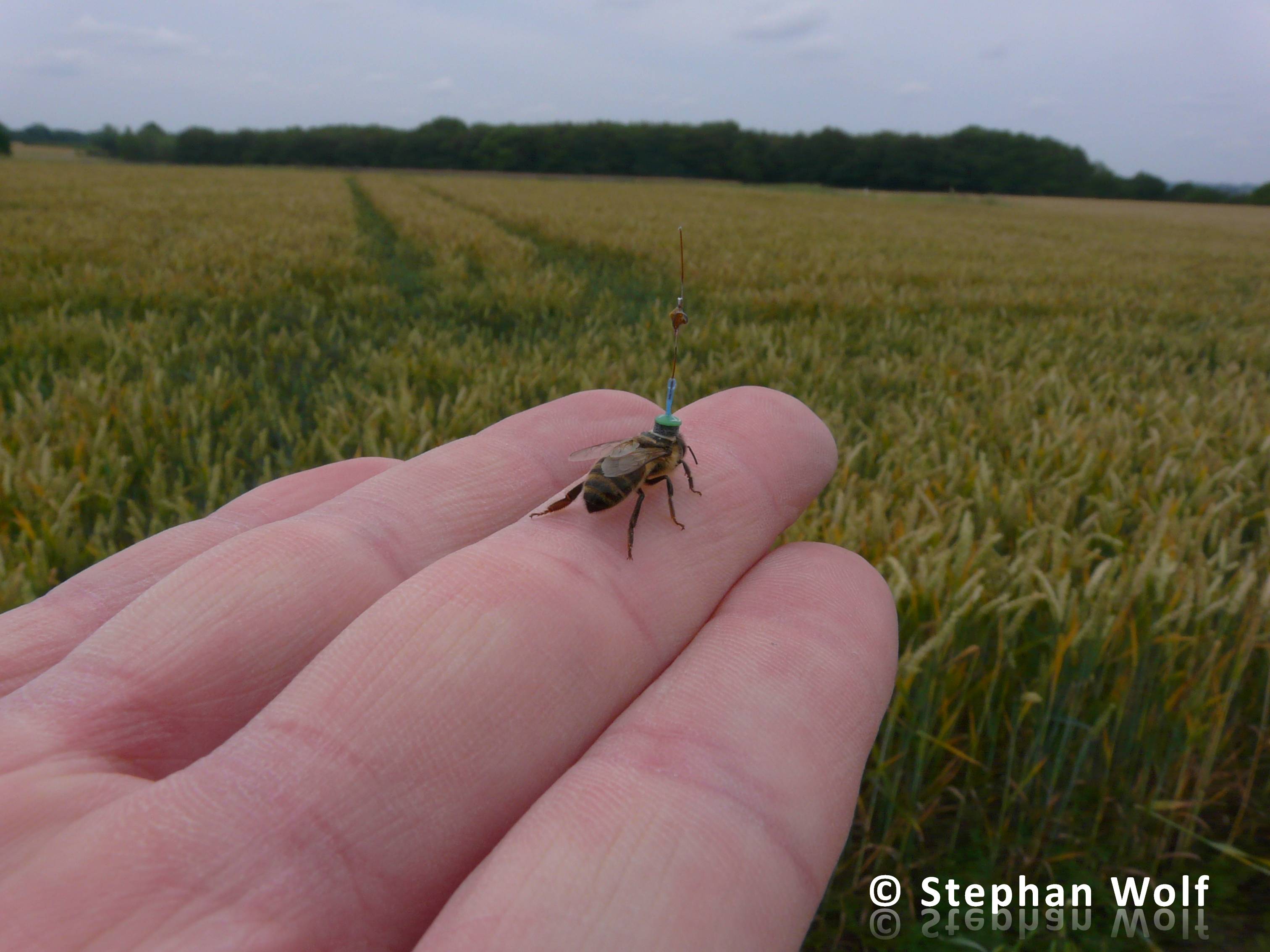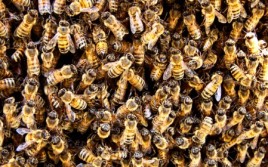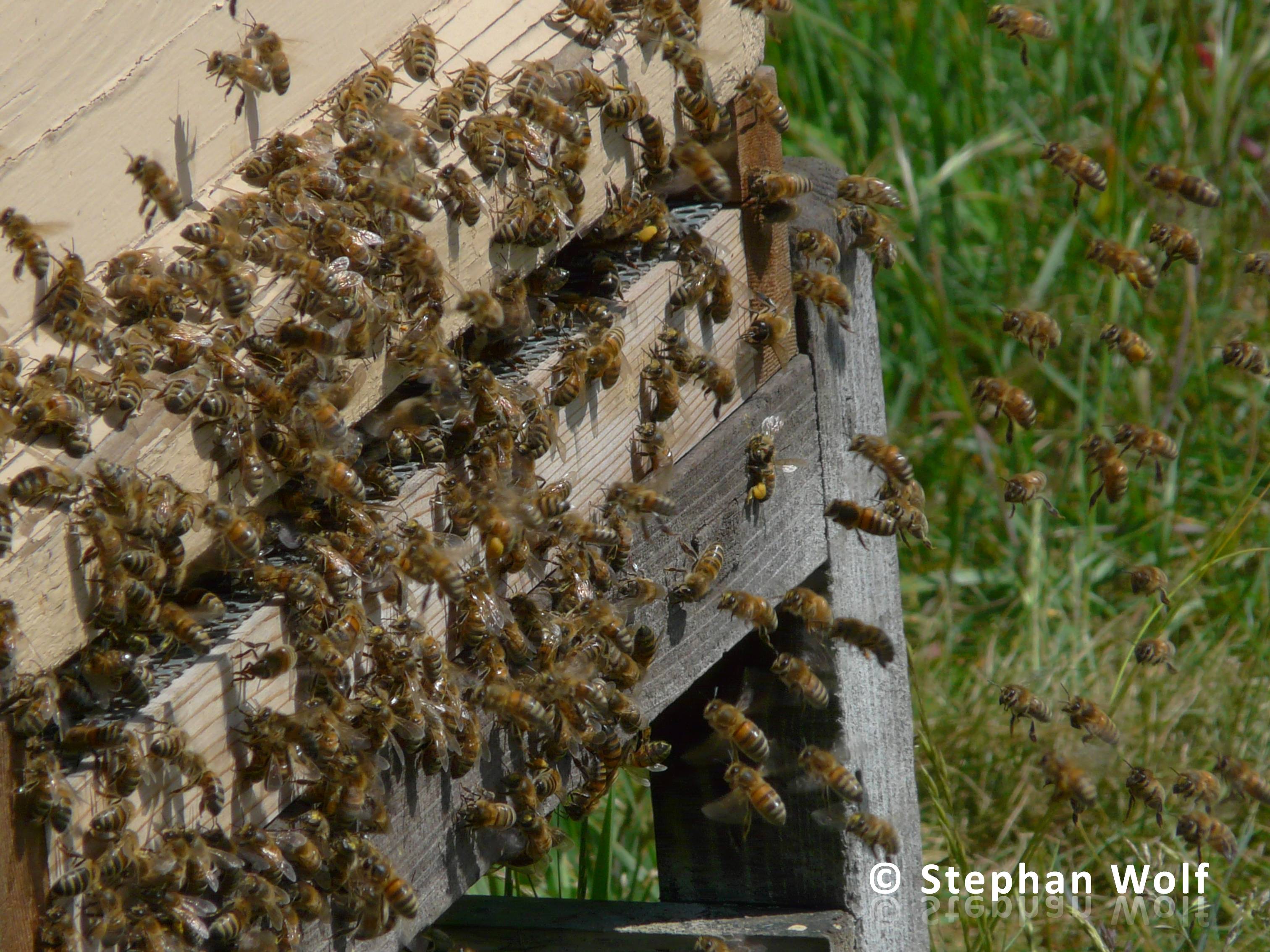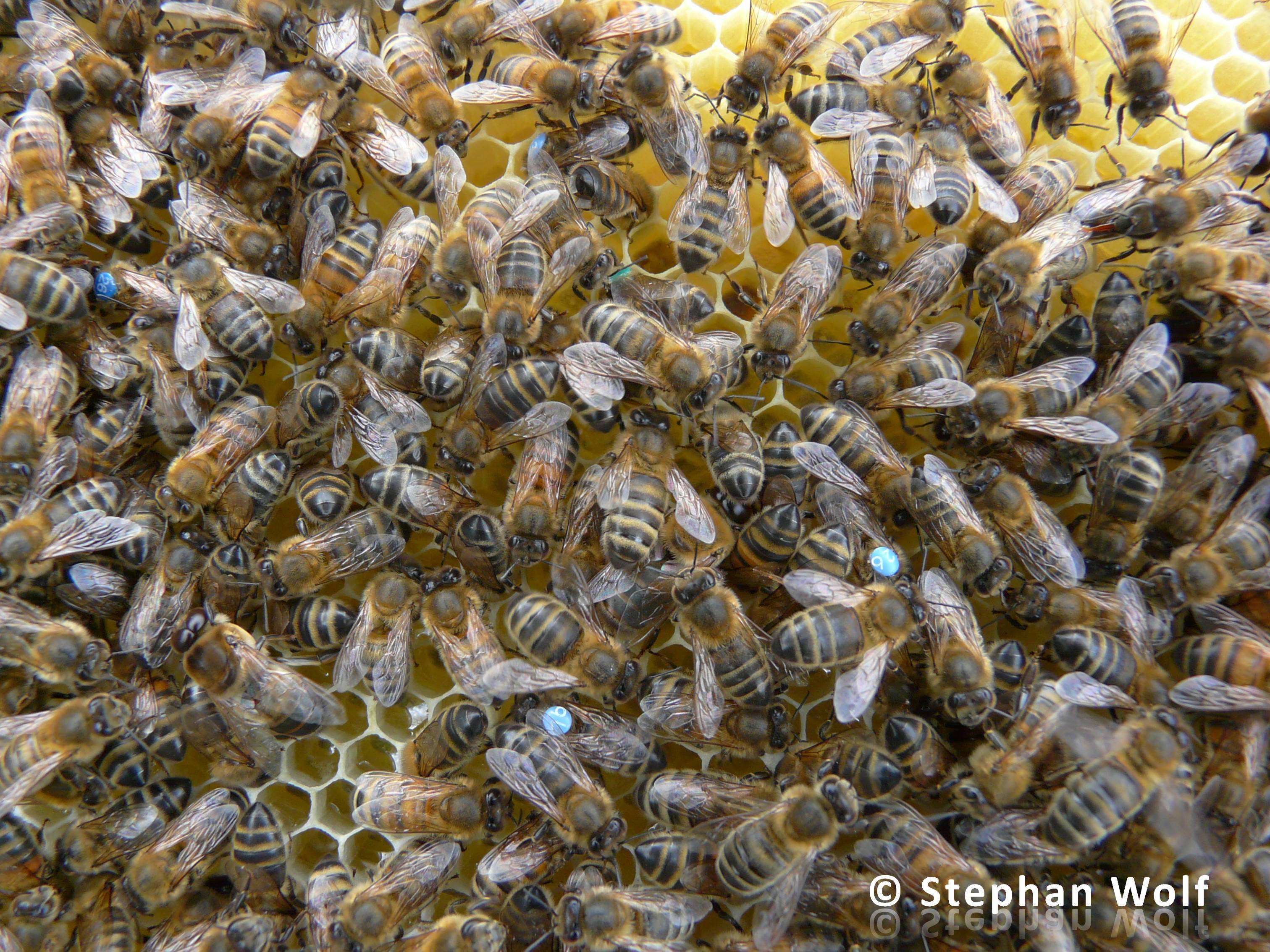Transcript
Dr. Stephan Wolf and Dr. Dino McMahon are research scientists working at Rothamsted Research, Hertfordshire, UK; the oldest agricultural research station in the world. With the guidance of Dr. Juliet Osborne and Prof. Robert Paxton, and as part of the Insect Pollinator Initiative (IPI), their project assesses the impact of emergent diseases on the flight performance and orientation ability of honeybees and bumblebees.They employ a range of modern techniques, including harmonic radar tracking.
Will Viney: Hello and welcome to Pod Academy. My name is Will Viney. This podcast is about the amazing research that is occurring into honeybees, bumblebees and other insect pollinators at Rothamsted Research in Hertfordshire. Bees have complex social lives, that have made them a source of fascination, fear and, of course, honey, for many centuries. Culturally, theologically, philosophically, bees have been used as illustrative models for human behaviour. Our children are encouraged to show their industry by being ‘busy bees’ and our philosophers have likened their communal, plural and corporate social character to our own. This deep-seated and anthropomorphic attitude to bees, and to honey bees in particular, issues from an ancient tradition that draws on their collective and industrious powers: socially stratified, artisanal, productive, under threat; from the earliest Greek poetry to the latest Hollywood blockbuster the bee stands as an emblem of man’s relationship to nature and, ultimately, to himself. But in more secular times the health of bee populations has become a powerful byword for ecological diversity and sustainability; the contribution that bees make to our industry and environment has become a major national and international concern. So with these things in mind I went to Rothamsted Research to learn more about the importance of bees as pollinators and the pressures that now threaten their population. By doing so I discovered the unusual techniques that some scientists use to know more about what bees do and how they do it. I spoke to Dr. Stephan Wolf and Dr. Dino McMahon and began by asking Dino how we might begin to understand the value of bees as insect pollinators.
—–
Dino McMahon: So I suppose we could think of the value of insect pollinators in two different ways: a commercial value and also an ecosystems value. One is perhaps easier to calculate and there have been some figures that have been discussed of the value of insect pollinators to global productivity that reach into the many hundreds of billions of Euro. And the other aspect, the ecosystems aspect, the role of insect pollinators within ecosystems – their stability and diversity – that’s perhaps less easy to calculate. Nonetheless, it’s as important, if not more important to us.
WV: Stephan, I wonder whether you could say something about the contemporary crisis that bees are facing?
Stephan Wolf: Bees inhabit a completely different environment and pressures of environment now than they did even fifty years ago. It has something to do with emergent diseases, which is the basic idea behind why we do research here as we do. But it also has something to do with a lot of interactions of different factors, like the use of pesticides, the hugely increased management of bees and of course altered landscapes. This is one of the big challenges when explaining why a lot of bees in the US died as they did. Even though a lot of highly respected bee research groups work on this problem, it is very hard to nail the thing down to one cause. And I think the overall outcome is that there is not one cause but the interaction of a lot of stresses that accumulated over the years and years on honeybee colonies that has led to the effects we see. A lot of honeybee colonies actually collapse for apparently mysterious reasons, just because they cannot cope with all these stresses at the same time.
DM: Our mandate is to try and unpick some of these complicated aspects of the story and to do that we choose a very experimental approach to try and reduce the number of variables at play, so we can really pin down which aspects of the problem are significant and which are not so significant. So the intention from our perspective is to design a highly experimental approach that relies less on a descriptive angle and more on a controlled, experimental angle.
This season we have been focussing our attention on Nosema ceranae which is this microsporidian, intracellular [inside the cell] parasite. There are certain ways which you can look at and investigate bee behaviour and we have taken the decision to look at very specific aspect of bee behaviour: the way that bees forage in their natural environment, outside of the hive. So one way of looking at behaviour might be to look inside the hive to see how individuals are interacting with one another, how they are going through their caste differentiation, from nurse bee to guard bee to forager, these are all things that can be done within the hive. But you can also think about looking at behaviours that are occurring outside of the hive, and that is what we’ve done this year.
SW: Yes, we’re in a very lucky position in that we have the technology to actually do that…
WV: Could you just say something about what it is you use and how you use it?
SW: Well, the methodology that we use is that we can actually track individual bees in the landscape by attaching a small antennae – a transponder – on their back, which can then be visualised by a harmonic radar system. The transponder reacts to the radar signal, transforming that into a harmonic frequency of the initial signal sent out. We can then track a bee in the landscape and see the signal moving in time and space.
WV: Is the hypothesis that bees which carry a disease move and behave in different ways?
SW: There have been some articles published on that. There is the suspicion that, especially with Nosema ceranae, a lot of bees tend not to come back to the hive again. There was this big question mark over why this should be. Some colleagues found very clear evidence that obviously these bees have problems to find their hive or die outside, or whatever it is, but now as we can track the bees we actually see why they do not return; we can really see what is the problem. Is it that they die outside and don’t make it back or is it that come back to the hive but have impaired orientation abilities and do not find the entrance, getting lost in the landscape? So this is nothing that we could actually see without individually tracking bees and, now that we have the tools to do that, it’s quite exciting.
DM: One of things that relates to that is ‘Colony Collapse Disorder’ (CCD) where, in the US in particular in 2006-2007, there was this quite unusual observation of colonies being opened up and there being no adult bees present. There was a perfectly healthy brood, in terms of resource such as nectar and pollen stores, a queen, but no bees. There were no dead bees around the colony; they just seemed to have mysteriously disappeared. And this was coined ‘Colony Collapse Disorder’. And so the way that Stephan has described our experimental approach would perhaps tie in quite nicely in trying to resolve these outstanding issues.
WV: Because all of a sudden you can actually see where these bees are going?
DM: Yes
WV: But it seems to be a bizarre concept to have a antenna on the back of a bee. Does that itself affect the behaviour of a bee and the way that it moves?
 SW: I think it would be not right for me to say ‘no’ but the transponder is actually designed in a way so that is very lightweight and bees are capable of carrying huge loads in terms of nectar and pollen, up to 90% their bodyweight they can carry around quite easily. So the weight of the transponder does not affect the bee too much, it does of course influence how bees can handle flowers and so on but, as we have a very controlled setting, we can account for this. The other thing is that we not only track diseased bees but we also track bees that are in a completely healthy condition, so they also have a transponder so we can compare two different groups on the same base line. They all have the same challenge to fly about in the landscape.
SW: I think it would be not right for me to say ‘no’ but the transponder is actually designed in a way so that is very lightweight and bees are capable of carrying huge loads in terms of nectar and pollen, up to 90% their bodyweight they can carry around quite easily. So the weight of the transponder does not affect the bee too much, it does of course influence how bees can handle flowers and so on but, as we have a very controlled setting, we can account for this. The other thing is that we not only track diseased bees but we also track bees that are in a completely healthy condition, so they also have a transponder so we can compare two different groups on the same base line. They all have the same challenge to fly about in the landscape.
WV: Catching bees. That must be hard? How have you evolved a system by which you can effectively catch a bee, stick an antennae on its back and let it go?
DM: Typically it’s not so hard, I think, because we just station ourselves next to the hive and we can be pretty sure that all of the bees we might be interested in will come in and out of that entrance. So we can very specifically know how to catch the bees.
WV: I assume you then radio someone with the radar they pick it up and you’re then able to track the bee’s movements?
SW: The radar is on standby all the time. We have a Perspex tunnel at the front of the hive that allows us to regulate the movement, the bee traffic, so that we have more time to actually spot single bees and just grab them with forceps or a little cage. And, since the radar is always is on standby, as soon as we have a bee we want to track an we have equipped this bee with a transponder we just radio someone and say, ‘OK’, switch the machine on, and off we go. Typically this works quite nicely.
—-
DM: As we’re driving along, this whole area we can conceive as our ‘experimental arena’ and we can see our experimental hive to our left as we drive along and that’s where we’re driving to at the moment. But our radar will be positioned about, how many metres would you say, Stephen?
SW: About 350 metres. The advantage of this place is that it belongs to Rothamsted, which makes it easy to assess the field, especially as we’re on good terms with the farm people. The other thing is that it is very flat. We have the requirement that the radar should not be obscured by vegetation but also ditches in the landscape where the bee could just hide and we would not get any signal and therefore not see it on the screen. So we have a mirror flat landscape here which is really absolutely perfect for what we like to do. We’ve put the hive over there, as you can see, it is right ahead now…
DM: And the radar is behind us, which is slightly elevated so it can look down upon the arena and collect the data much more effectively.
WV: OK, shall we have a look?
—-
WV: Recalling something you said to me earlier: when trying to introduce new bees into a hive you encountered a problem that you hadn’t anticipated. Could you just repeat that for us because it’s a really interesting example.
SW: It is an interesting example because I was following the advice I got from people that have worked with honeybees for quite a long time. We marked a lot of bees and just sprayed them with sucrose solution with a normal sprayer.
WV: Is there a danger then that if you introduce a bee then it’ll just be booted out again?
SW: Yes, exactly. Typically bees do not like that. Even if the acceptance rate is really high say, if the bees are very young, and if you spray them additionally with sucrose solution then they tend to be attractive to the bees, even though these are foreign bees and would usually be chucked out. I followed all these rules, the bees were very very young, all marked very nicely, sprayed them and put them in the colony, and all of a sudden, at the entrance I saw a lot of workers actually dragging my bees out and dropping them on the grass. Hundreds of bees, marked bees…
WV: Hours and hours of labour…
SW: Hours of work just lying there, lost in the grass. There was no way to re-sample these bees. We had to think of a new ways of introducing these bees, giving the new bees just a bit more time to accumulate the smell of the hive, the fingerprint. And, well, we found ways around that; it’s actually working really nicely and has turned out to be one of the most important tools that we developed. Throughout the year we continuously introduced bees to hives and even much older bees for other experiments where it was important to have bees of a certain age.
DM: I think another example was when we had our marked bees in a brood frame within – so you have a brood box within that you have a brood frame – and on that we had our experimental bees which had been nicely marked with individual tags and we were really happy that we had done this. But we hadn’t fed them with the inoculum that we were using in our experiment yet. So we had to get around what apparently seemed like an obvious and trivial problem, but when it came to actually getting the bees out of a brood box, they were all marked and mixed up with their individual colours and we couldn’t work out how to get them out and put them into separate tubes and feeding them properly. So we ended up scratching our heads for a number of hours trying to work how we were going to get the bees out in a way that would work.
WV: What was the solution?
DM: Well Jason Lim, our engineer, came up with an idea to modify one of the plastic exits that fit onto the hives. What tends to happen is that some of the bees are really active and energetic and those we got out quite simply because they just crawled out of the hole using this modified tunnel to take the bees from. As more of these bees emerged we managed to divide them out and left in the brood frame we’re quite a lot that we couldn’t get to but by that stage the energetic bees had left so we could easily pick them out by hand.
SW: Subsequently we changed our entire approach to the thing; one of those nice little things that you just discover that changed the entire approach to marking and inoculating bees to a completely different schedule. It allowed us not only to overcome the problem of getting marked bees selectively out of a brood frame where hundreds and hundreds of bees were crawling about and one simply cannot open the box to grab a bee, but it actually turned out to be a far more efficient way of doing things. A very nice example. It’s these little things that you tend not to think of, you always think of complex problems that you have to overcome but never of these little practical things, this fine tuning of methods that can often take quite a while.
WV: You have this wonderful existence – partly indoors, in the lab with the bees, but also working with the bees outside too – and that balance of human power always seems to be in that precarious pattern…
DM: Yes, and different institutions. We’re all working with different institutions across Europe and we engage in very different types of research. So part of the time I’m here doing the radar work and part of the time I’m at Queen’s [University], Belfast, where I’m looking at different aspects of honeybee research. It’s very exciting.
SW: It’s very good because this kind of project – with this balance between practical and theoretical issues, and this huge collaboration network that you operate in – allows for a lot of cross-fertilization.
WV: Work of the kind that you’re doing is and has to be collaborative in this way; it couldn’t exist otherwise.
DM: It couldn’t work…
SW: Well it could be possible but the quality of the outcomes would be way less because you simply cannot be the best guy in each and everything; it’s simply not possible.
WV: There’s an old Latin phrase that seems to capture the anthropomorphic attraction of the bee and anticipates the necessarily collaborative character of scientific research into the diseases that threaten this communal behaviour. The phrase is this – una apis, nulla apis, which means, literally; ‘one bee is no bee’. Bees can’t get on without each other, their colonies collapse, their efficiency as pollinators and as producers of honey go into decline unless they work together. What I found so striking about the way in which Dino and Stephan spoke about their bee research is their need for experimental collaboration to investigate an international problem. Their research is ongoing; they continue to gather their data in the hope that they can isolate some of the many variables that affect bee behaviour. So, please return to this page and follow the links provided to keep up with their progress. For now, thank you for listening this Pod Academy podcast, please take a look at the other podcasts available in our science and environment faculty.
Presented and produced for Pod Academy by Will Viney.
Notes
The Insect Pollinator Initiative (IPI) is a collaborative project involving the Biotechnology and Biological Sciences Research Council (BBSRC), Department for Environment, Food and Rural Affairs (Defra), Natural Environment Research Council (NERC), the Scottish Government and the Wellcome Trust.
Useful Links and Suggested Reading
Tags: Bees, Collaborative Science, Colony Collapse Disorder, Dino McMahon, Experimental science, Insect Pollinators, Nosema ceranae, Rothamsted Research, Stephan Wolf




this is so gay
suck my balls
mate v sorry about the ridiculous comments written by you know who. Fascinating podcast, keep it up